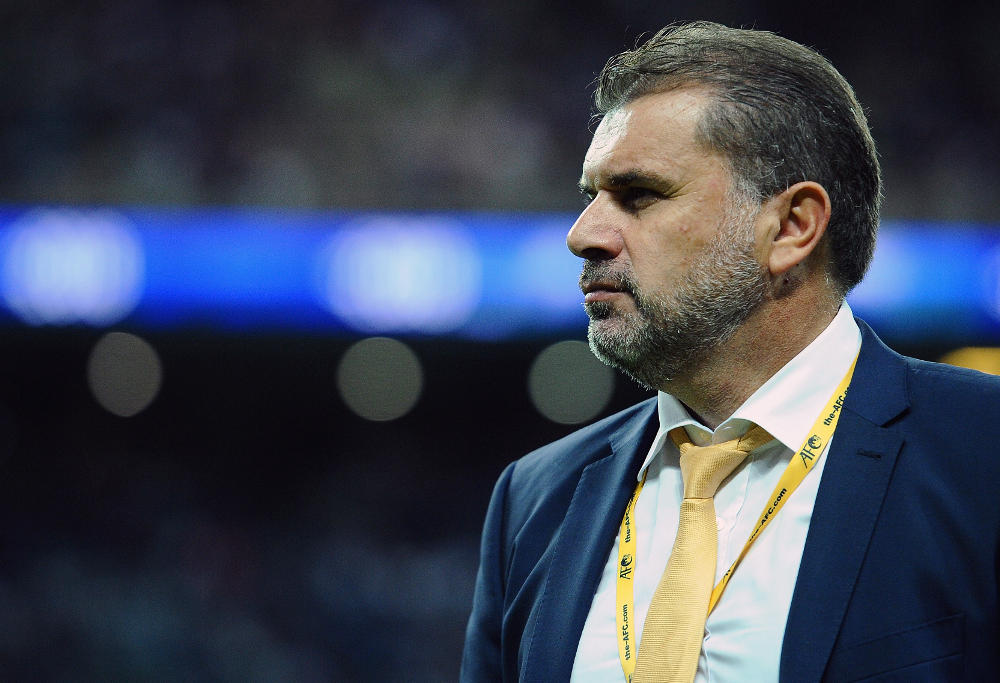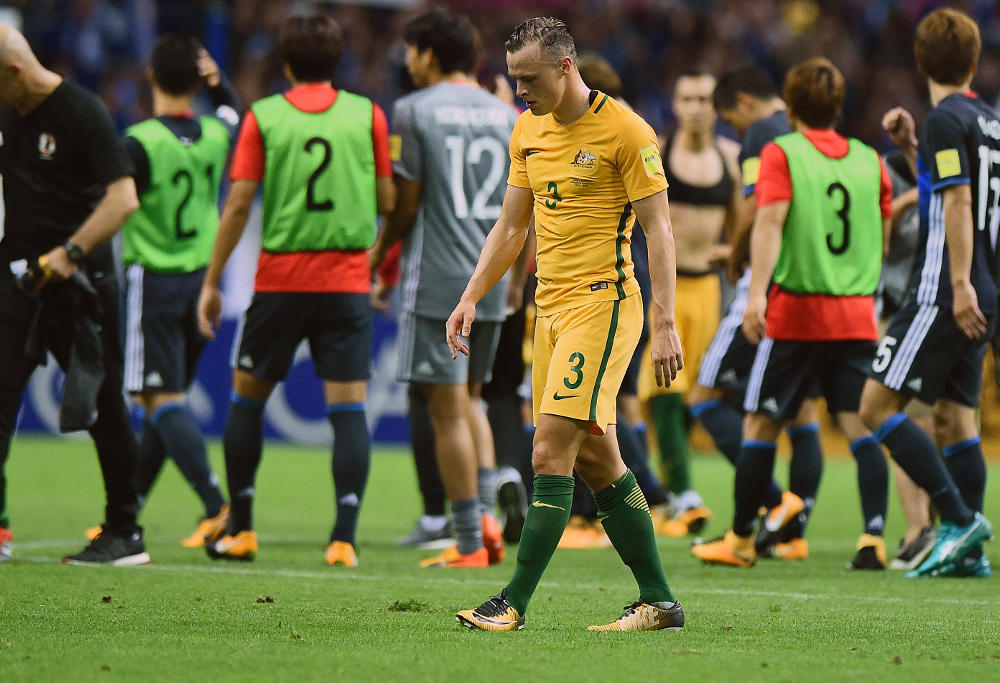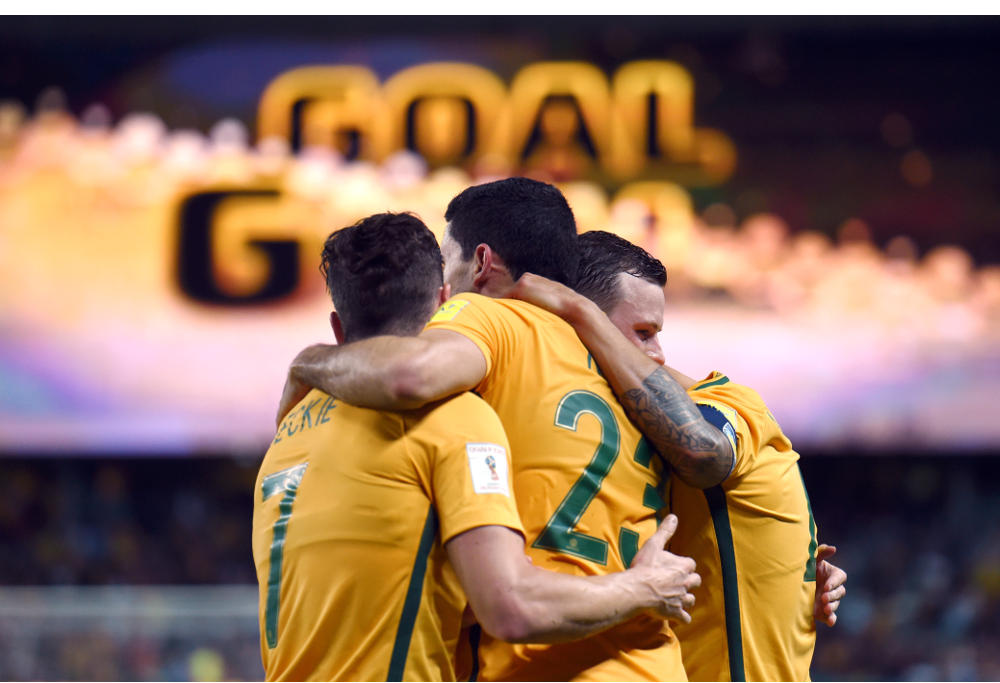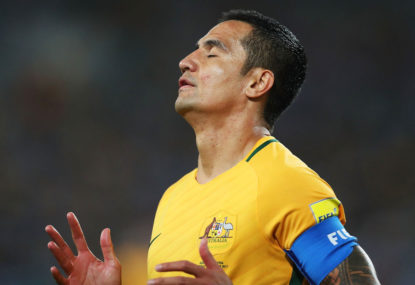The Socceroos failing to qualify for the 2018 FIFA World Cup would be a serious blow to football in Australia, but it wouldn’t signal the demise of the game.
Remember the 2002 FIFA World Cup in Japan and South Korea?
That was the last time the Socceroos failed to qualify for the finals, losing to Uruguay in the inter-confederation playoff despite travelling to Montevideo with a 1-0 lead from the first leg in Melbourne.
The image of Tony Vidmar weeping as he left the field is one of the most iconic in Australian football – made all the more symbolic by the spot-kick he swept home in the shoot-out against Uruguay at Homebush just four years later.
It’s that yin and yang of emotions that has made supporting the Socceroos such a rollercoaster ride over the years.
Those same fans – to say nothing of Football Federation Australia – are no doubt desperate to see the national team overcome Honduras in their two-legged inter-confederation playoff. But even if the Socceroos fail at the final hurdle, it won’t be the end of the game as we know it in Australia.
Short memories
It’s easy to forget, but the last time the Socceroos failed to reach the World Cup, the Wollongong Wolves had just won the second of back-to-back National Soccer League titles in front of 13,402 fans at Parramatta Stadium.
When Soccer Australia chairman Tony Labbozzetta took to the podium after the match, he was roundly booed by Wollongong fans incensed that they had been denied the right to host the grand final at WIN Stadium because, as Soccer Australia said, it held less than 20,000.
The league itself was practically broke on the back of a disastrous broadcast deal with Channel Seven, while the collapse and subsequent cancelling of the 2001 FIFA Club World Championship robbed the Wolves of the chance to test themselves against the world’s best – and earn some much-needed revenue.
By 2004, the National Soccer League was dead.
Short-lived fully professional clubs like Carlton and Parramatta Power had come and gone in quick succession, and there seemed to be no end in sight to Australia’s long stint in the international wilderness.

(AAP Image/Matt Roberts)
A changed landscape
Cometh the hour, cometh the man. Guus Hiddink may have steered the Socceroos to the 2006 FIFA World Cup, but it was Frank Lowy who appointed him. And it’s Lowy football fans can thank for the advent of the A-League – even if Australia’s fully professional national league hasn’t always lived up to expectations.
There can be few doubts that the Socceroos’ performance at the 2006 FIFA World Cup made the rest of the world sit up and take notice – even if the All-Star team selected by FIFA’s Technical Study Group predictably contained 23 players from Europe and South America.
Not only did reaching the second round fuel the belief that the Socceroos belong on the world stage, it helped propel them to two more World Cup qualifications in 2010 and 2014. And while a first foray into the Asian Cup ended in relative disaster in 2007, two further tournaments saw the Socceroos reach the final in 2011, before going one better to lift the trophy on home soil four years later.
It’s not bad going for a country that didn’t even boast a professional league 15 years ago. And like him or loathe him, much of these achievements can be traced directly back to the vision of Lowy Sr.

(AAP Image/Matt Roberts)
Solid foundations – or are they?
Whether Australian football is in a better or worse position than it was 15 years ago largely depends on whether you’re a glass half-full or empty kind of person.
Our national league doesn’t necessarily look like it’s on the verge of collapsing at any second, although it could certainly stand to be in much better health. And you could argue that there’s as much transparency around the running of the game today, as there was during the dying days of the NSL.
Meanwhile, the national team is riding a wave of unprecedented success – even if the mainstream media would have you believe otherwise.
Where once Australia’s greatest achievement was being crowned Oceania champions, today the Socceroos are the reigning champions of the most populous continent on the planet.
Reaching three successive World Cups is no mean feat either, particularly when one of those campaigns came via a playoff, while the other two saw the Socceroos navigate untested waters in Asia.
Whichever way you slice it, Australia’s achievements since that fateful night in November 2005 deserve some recognition.
Still, there’s a nagging feeling that it’s all about to come crashing to a halt.
Honduras represents another venture into the unknown, and already the Hondurans are said to be unimpressed at being portrayed as underdogs going into the two-legged tie.

(AAP Image/Paul Miller)
The show must go on
Whatever happens in San Pedro Sula and at the return leg in Sydney, the reality is that football in Australia will invariably go on.
Missing the World Cup won’t do anything for the FFA’s bottom line, nor will it help the probably futile quest to become the most popular sport in Australia.
But the sheer number of grassroots participants in the game, not to mention the financial support of those who back it, means that football will always go on in one form or another in Australia.
Make no mistake though: FFA is treading a tightrope.
With finances stretched and viewership declining, they can ill-afford to sit out the World Cup in Russia. If playing in primetime on Australian TV screens would have given the game a real shot in the arm in 2002, then failing to qualify for next year’s tournament could be equally damaging.
There may be no love lost between the game’s governing body and Ange Postecoglou, but FFA will nevertheless be hoping the Socceroos tactician has the technical know-how to steer Australia to a fourth consecutive World Cup.
Miss out, and the only other thing to watch will be the storm clouds gathering on the horizon.
Hisense offers quality TVs at competitive prices. You can catch all the football action this summer in crystal clear HD on Hisense’s ULED TV while saving money at the same time.






























































































 (AAP Image/Matt Roberts)
(AAP Image/Matt Roberts)
